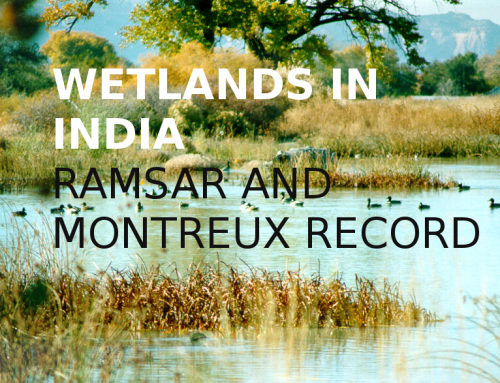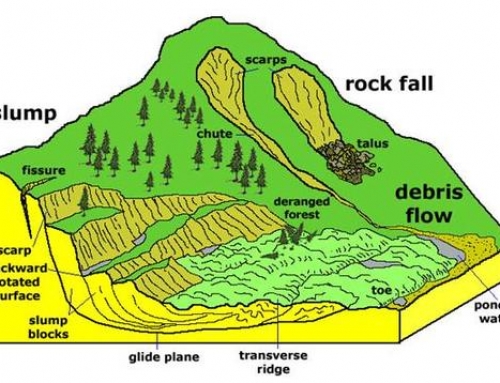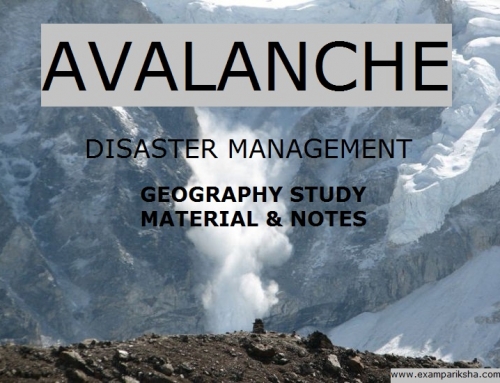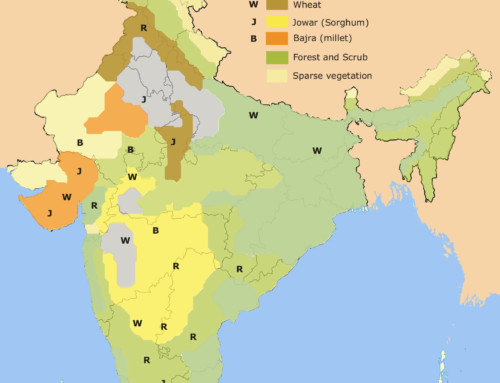Biosphere -All living components of the Earth. All plants animals and microbes and their surroundings are known as biosphere.
Environment has two components- Abiotic(physical and inorganic) and Biotic(organic).
The structure of Biosphere has three components: Abiotic, Biotic and energy components.
I. Abiotic Components: It consists of all non-living elements which are essential for the survival of all living organisms. It has lithosphere, atmosphere and hydrosphere. Mineral nutrients, gases and water are three basic requirements of organic life.
II. Biotic Components: It includes Plants, animals and human beings to make biotic components of environment. there are three sub-system:
- Plants:They are very important part of biotic components. They are primary producers of food through process of photosynthesis. They are called autotrophs.
- Animals: They are main consumers of plant produce, hence known as Heterotrophs. They use organic matter produced by plants and transform the food into energy (used in growth and development).
- Micro-organism: They act as decomposers of dead plants and animals.
III. Energy : It is vital component of biosphere which is essential for reproduction and generation of all biological life on Earth.
<< Read about list of National Parks here >>
Structure and composition of Biosphere
Ecological System: Interactions of a particular group of organisms with abiotic factors within a particular habitat resulting in particular habitat resulting in clearly defined energy flows and material cycles on land, water & air.
Ecology: Derived from Greek word ‘oikos’ meaning house and ‘logy’ means science. Ernst Haeckel used the term in 1869 for the first time. The study of interactions between life forms and physical environment is known as science of ecology. So, it is the study of abiotic and biotic interactions.
Habitat: It is the totality of physical and chemical factors that constitute the general environment.
Ecosystem: System of biotic and abiotic components inter-related and interact with each. Therefore, an ecosystem involves interactions among different components and flow of energy among these components.
Ecological adaptation: Plants and animals species have got adapted through evolution to different types of environmental conditions.
<< Read about powers of Competition commission of India here >>
1. Flow of Energy in the Ecosystem: It involves transfer of energy from one trophic level to another. Trophic level is the stage at which food energy passes from one group to another. It occurs through the food chain.
2. Food Chain:
Food chain is basically the sequence of transfer of energy from the organisms in one trophic level to another trophic level. It is a fact that the Sun is the major source of energy. The number of organisms at a trophic level depends upon the availability of food at its lower level.
There are two types of organism in food chains: Autotrophs and heterotrophs. Autotrophs have three broad categories of herbivores, carnivores and omnivores.
- Grazing Food Chain– It has plants at the first level and last level is occupied by carnivores. Here loss of energy at each level occurs through respiration, excretion or decomposition.
- Detritus Food Chain– It is based on autotrophs energy capture initiated by grazing animals. Decomposition of organic waste that is derived from grazing food chain.
Biogeochemical cycle:
The cyclic movement of chemical elements of biosphere between organism and the environment is known as Biogeochemical cycle. It involves movement and circulation of soluble inorganic substances (known as nutrients) that are derived from soil, and atmospheric forms of inorganic substances through organic form of various biotic components. 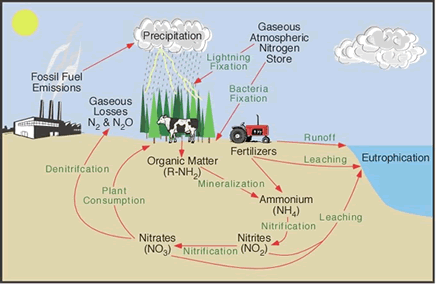
There are two types of Biogeochemical cycles in the description of biosphere:
- Gaseous cycle– main reservoir of nutrient is atmosphere and the ocean.
- Sedimentary cycle– Main reservoir of nutrient is soil and sedimentary and other rocks of the crust.
The Water / Hydrological Cycle:
It helps in exchange of water between air, land, sea and living plants and animals. Solar energy drives the hydrological cycle. It causes massive evaporation, from oceans and other water bodies leading to cloud formation and precipitation. On surface, it acts as freshwater in form of snow, groundwater.
The Nitrogen Cycle:
In the structure and composition of biosphere, the Nitrogen cycle plays a very important role. Since Nitrogen is essential for life processes, its continuous supply is maintained by nitrogen cycle in the biosphere. The protein produced by animals and plants during their metabolic processes leads to formation of organic compounds of nitrogen. A major amount of nitrogenous organic residue in soil has its origins in dead and decayed plants and excreta of animals. These organic residues in the soil are then taken up by soil micro-organisms which break down the soil nitrates into nitrogen by the process of denitrification while others transform nitrogen in form of soluble nitrogen compounds.
<< Read about Mauryan Rulers here to revise history>>


